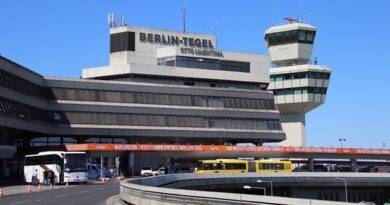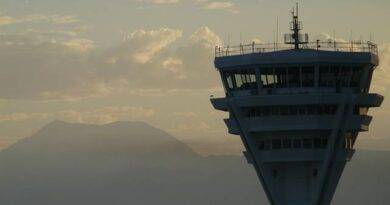Turbulence – Definition and more (Clear air turbulence, Convective turbulence…)
What is Turbulence?
Turbulence is the atmospheric condition that causes aircraft to suddenly lose altitude and shake.

Why Does Turbulence Happen?
The air that makes up our atmosphere is always in motion. An airplane takes advantage of this mobility of air while flying. In order for the aircraft to fly stably, the air currents flowing under and over the wings must be regular. As a result of some weather events, these air currents may deteriorate and air gaps may occur. In these cases, turbulence may also be experienced. There is not just one reason for turbulence to occur. There are many factors that affect the formation of turbulence. Turbulence names are also shaped by these factors. For example, open air turbulence, temperature deviation turbulence and lunge turbulence. Turbulence is still an issue under investigation from an academic point of view. It is therefore difficult to make a clear definition of the factors that cause turbulence.
What Does It Mean to Enter Turbulence?
Entering into turbulence means that the plane is caught in distorted air flow during flight. During the turbulence, the plane may rock and vibrate. Some turbulences are severe and some are very mild. Pilots will talk about the turbulence situation and ask you to fasten your seat belt. In this case, it is very important that you fasten your seat belt. Because severe turbulence can hurt you. According to a study conducted in the USA, only 58 of the 800 million passengers who travelled in 2015 were damaged due to turbulence and it was determined that the majority of these passengers did not wear seat belts.
How Long Does Turbulence Last?
The duration of turbulence that occurs as a result of weather events can be long or short depending on the condition of the distorted air flow or the air pocket.
In December 2015, 21 people were injured on an Air Canada plane due to sudden turbulence.
How Many Different Types of Turbulence Are There? How many different forms of turbulence are subjected to aircraft, do you know? Basically, there are four different types of turbulence.
- Clear Air Turbulence
The main reason for this clear air turbulance is the very high air currents called jet streams, which are at very high levels and envelop the whole world. The speed and direction of jet streams can change extremely suddenly. Circular air currents arising as a result of this change cause turbulence. Outdoor turbulence is the most dangerous type of turbulence because it cannot be detected by the on-board weather radar. Both flight crew and passengers can be caught unprepared. Therefore, most of the turbulence-induced injuries occur due to clear air turbulance.
2- Wake Turbulence
This type of turbulence is the result of circular air movement at the tips of aircraft wings.
Especially narrow body aircraft coming from behind wide-body aircraft may be affected.
3- Convective Turbulence
It occurs as a result of uneven warming of the earth. The rising hot air causes changes in the speed and direction of the wind.
Dispatchers who make the flight plan or the pilots who encounter such air currents during the cruise adjust the route in a way that they do not enter into such turbulence.
4- Mountain Wave Turbulence
It occurs as a result of strong wind currents passing rapidly over the tops or sides of mountains. This type of turbulence is realtively easy to avoid; because the location of the mountains is clear.
Turbulence may Increase in the Future
As our planet gets warm with global warming, turbulences are predicted to be more common and stronger in the future. The 2013 report published in the Journal of Nature Climate Change suggests that climate change could increase turbulence from 10% to 40% in the future, especially in Transatlantic flights. In addition, the same report predicts that the frequency of turbulence may increase from 40% to 170%.
For more articles click.


